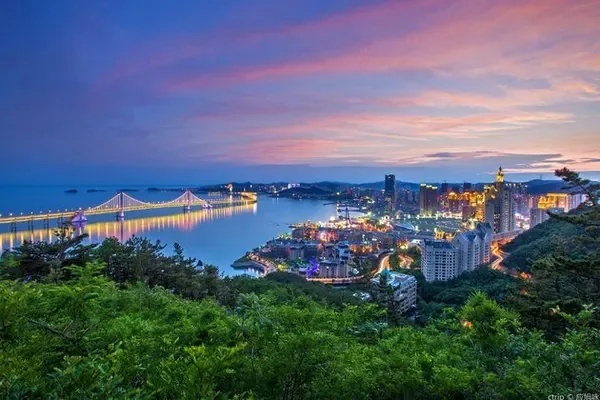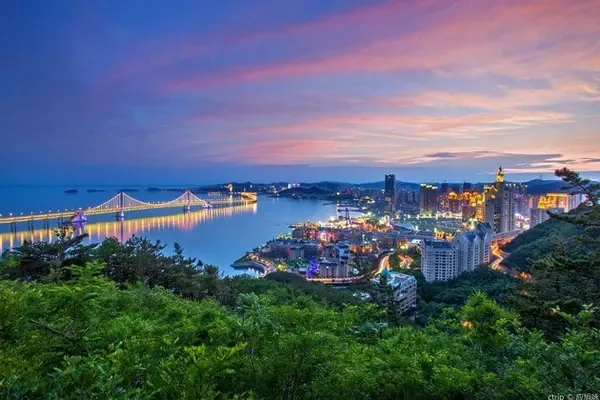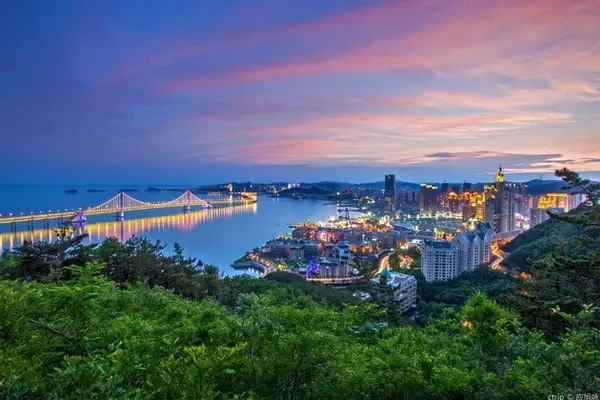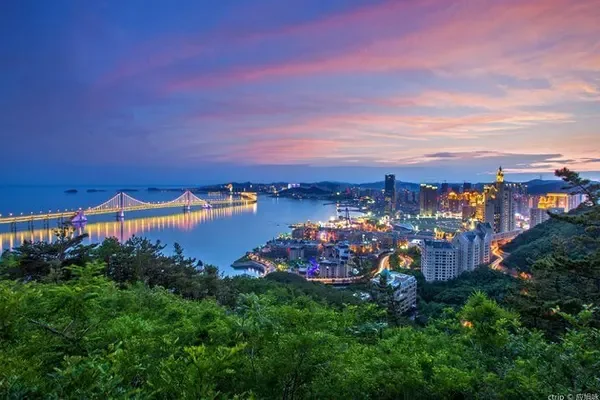2020, the Year of the Gengzi Rat, is an extraordinary year, but it has passed so quickly without knowing it, and I have gradually gotten used to this slightly restrained life. Why do we travel? Traveling is an attitude. Seeing the scenery is an unchanging belief. Travel around the world with the eyes of discovering beauty, discover beautiful scenery at any time, freeze beautiful pictures with a camera, and go to as many places as possible in a limited life. will find the meaning of life.
Friends who have never been to Ningxia must be very curious about what kind of place Ningxia is. Today’s Ningxia travel guide will exclusively introduce Ningxia Hui Autonomous Region. The success of the journey depends on whether the preparation is sufficient. Take your heart to Ningxia Doubt, come with me!

The first stop of Ningxia tourism, Shuidonggou

Shuidonggou is the earliest Paleolithic cultural site excavated in China, known as "the birthplace of Chinese prehistoric archaeology" and "the historical witness of the cultural exchange between China and the West". It is a national key cultural relic protection unit, a national AAAAA-level tourist attraction, and a national geological park. It is listed by the state as one of the 100 national cultural relics protection sites and one of the "100 most significant archaeological discoveries of Chinese civilization". It won the silver award of "China's 50 Most Worthy Places for Foreigners to Visit".



There is still a section of the Great Wall along the waterfront in the tourist area of Shuidonggou Ruins. After passing through the Luhua Valley for about 3 kilometers, you will arrive at Hongshan Lake, the largest natural lake in the Shuidonggou Tourist Area. In this unique Yardang landform and soil forest landscape, it is rare for a lake with a water area of 1.8 square kilometers to appear, but what is even more rare is that we can see the Ming Great Wall standing majestically on the other side of the cliff! As we all know, my country’s When the Great Wall was built, it was surrounded by mountains and rivers, using local materials. However, none of the Great Wall can reflect the three-dimensional military defense system composed of mountains and rivers, with the help of the 15-18 meter high Grand Canyon, the unique cave of Tibetan soldiers, and the castle of the defenders in an area of about 7.8 square kilometers. This is also a unique highlight of the Shuidonggou site tourist area.



The Zangbing cave twists and turns in the hanging wall, connected up and down, and connected left and right. There are many forks in the cave, turning left and right, and there is no end for a long time. It is really like a maze. Generally, it is difficult to walk if you are not familiar with the situation in the cave. go out. In addition to the tunnel, there are earth houses on the left and right in the cave, which can be used for people, and they are probably dedicated to the leaders of the army. There are also food storage rooms, wells, kitchens, etc. in the cave. As long as a certain amount of food is stored, within a corresponding period of time, the soldiers hidden in the cave can still survive without leaving the cave. Because the Tibetan soldier cave is more than 10 meters above the bottom of the ditch, it may not be afraid of flooding. Over the years, even if there is a mountain torrent, the Tibetan soldier cave has never been flooded. We are amazed at the wisdom of the ancients.



Tracing back the true history of Ningxia, since ancient times, tens of thousands of years, the successful excavation of Shuidonggou ancient human cultural sites has opened a new era of prehistoric archaeology in China. As one of the earliest Paleolithic cultural sites excavated in China, The mysterious Shuidonggou is a treasure land sought after by countless archaeologists at home and abroad.

The Yellow River Irrigation Area in Ningxia took more than 2,000 years to irrigate this fertile land of fish, rice and water, which is why Ningxia got its name.

The Yuhuang Pavilion in Yinchuan, Ningxia is located in the bustling urban area. It is one of the ancient buildings left over from the ancient city of Yinchuan, and it is particularly conspicuous in the modern city.

Xixia Royal Mausoleum is the royal mausoleum of the ancient kingdom of Ningxia, which was once glorious for a time in the history of Ningxia. Li Yuanhao, the leader of the party, built Daxia, also known as Xixia. There are traces of this dynasty, but the cultural heritage left over from history proves its past rise and fall!

Camels are the main means of transportation in the western desert area, and there are many places where you can ride camels in Ningxia. You can see gentle camels in many scenic spots such as Shapotou, Shahu, Shuidonggou, and Huangsha Ancient Ferry.

There is a mountain in Ningxia called Helan, which connects the desert to the north and the plain to the south. As a natural protective barrier for the Yinchuan Plain, Helan Mountain blocks the cold wind from Siberia and the sandstorm from the desert. It can be said that without Helan Mountain, there would be no Yinchuan Plain. A vast and fertile landscape!

Shapotou integrates the desert, the Yellow River, high mountains, and oases into one place. It has the majestic scenery of the northwest and the beautiful scenery of the south of the Yangtze River. There is the largest natural sand skiing field in China, the "No. 1 Cable in the World on the Yellow River" across the Yellow River, the ancient waterwheel representing the Yellow River culture, the sheepskin raft, the oldest transportation tool on the Yellow River, and the rare mirage in the desert. You can ride a camel across the Tengger Desert, you can take an off-road vehicle to surf the sand sea, and you can enjoy the wonders of the lonely smoke in the desert and the sunset on the long river.

Zhenbeibao West Studios is 35 kilometers away from Yinchuan City, and it was built on the basis of an original old castle. The unique, majestic, desolate, tragic, dilapidated, and undefeated scene of the ancient castle is maintained and utilized here, highlighting its sense of desolation, loess flavor, and primitive and folk aesthetic connotations. It retains its special aesthetic value, allowing film artists to give full play to their imagination and creativity in this western scenery.

Walking into Huoshizhai, one after another Danfeng and Red Cliffs come face to face, with unique and beautiful shapes. The area of the scenic spot is 100 square kilometers, which is a typical feature of "Danxia landform". Strange mountains, strange stones, luxuriant trees, caves and grottoes can be called the five wonders of the scenic spot. The scenic spot is composed of three major sections: Yuntai Mountain, Shisi Mountain, and Dashicheng. There are eight scenic spots including Love Bird Peak, Qipanliang, Zen Buddhist Temple, Ban Grottoes, Yuntai Mountain, Shisi Mountain, and Dashicheng, as well as 30 caves excavated in the past. The scenic spot is rich in animal and plant resources, diverse species, and lush vegetation. The perfect combination of Danxia landform and virgin forest here creates the most bizarre and colorful natural landscape. The three religions of Buddhism, Daoism and Yi live together in harmony here, making it the only three in China. A religious holy place where religion coexists. Huoshi Village is a paradise for cleansing the heart and nourishing the lungs, and it is also a holy place for pilgrimage and self-cultivation!

Chengtian Temple Pagoda, located in Chengtian Temple in Xingqing District, Yinchuan City, Ningxia Hui Autonomous Region, was built in the first year of Xixia Chuisheng (1050). According to records, after the death of Li Yuanhao, the founding emperor of Xixia, his son ascended the throne at a young age. The empress dowager wished that the Li family and the Xixia country would be strong forever in order to protect his son's "sacred longevity". Chengtian Temple and pagoda were built.

In ancient times, Helan Mountain was the place where the Xiongnu, Xianbei, Turkic, Uighur, Tubo, Dangxiang and other northern minorities lived, lived and multiplied. They chiseled the scenes of production and life on the rocks of Helan Mountain to express their yearning and pursuit of a better life, and reproduced their aesthetic views, social customs and life interest at that time. In the hinterland of Helan Mountain, which is more than 200 kilometers long from north to south, there are more than 20 remains of rock paintings. Among them, the most representative ones are Helankou Rock Paintings.

In the nature reserve, there are rare large-scale spruce forests in Northwest my country, about 150,000 mu, which is very precious. Deep in the jungle, there is also a deer farm covering an area of more than 30 hectares. In the high mountains above 2000 meters in the Baokuang area, there are stretches of Chinese pine forests and spruce mixed forests on the shady slopes, while on the sunny slopes of the high mountains above 2400 meters, there are light green aspen forests or aspens and spruces. mixed forest. In the dense forest, the strong wind is howling, and the pines are bursting, like a surging tide of money. "Wanhe Songtao" and "Helan Jingxue" are wonders on the top.
Why do we travel? Traveling is an attitude. Seeing the scenery is an unchanging belief. Travel around the world with the eyes of discovering beauty, discover beautiful scenery at any time, freeze beautiful pictures with a camera, and go to as many places as possible in a limited life. will find the meaning of life.
宁夏到底是怎样一个地方,看完这些你是否明了?美丽的宁夏,是您西部旅游必经之地,来了绝对不会后悔!



